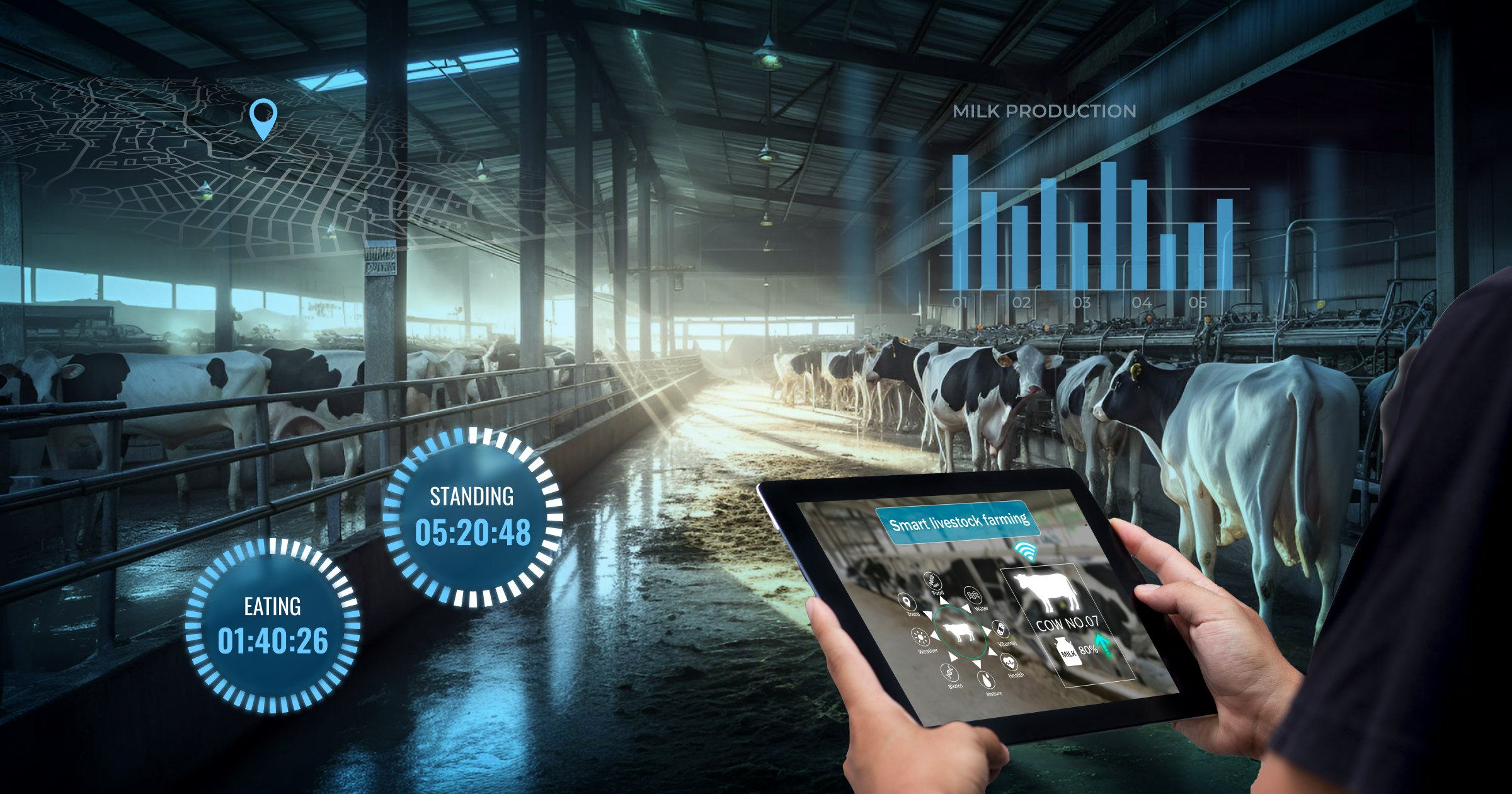Introduction
Good day everyone! My name is Anthony and I am a passionate livestock farmer. I have been raising cattle, goats, and chicken on my 100 acre farm for the past 15 years. Over the years, I have seen tremendous advancements in technology that have helped streamline operations on farms and make livestock management much more efficient.
In this blog post, I would like to share my experience and insights on how integrating various technologies has helped me scale up my farm without requiring more labor or resources. The livestock industry is continuously evolving and technology plays a huge role in driving improvements. I believe embracing new technologies is key to remaining competitive and sustainable in the long run.
While technology cannot replace human skills and judgment, it provides powerful tools to enhance productivity, welfare, and decision making. I have made it a point to regularly learn about emerging technologies and evaluate how they can benefit my farming practices. In this blog, I will go over some of the most impactful technologies I have incorporated and how they have benefited my farm operations. I hope others find this information useful as well in enhancing their livestock management.
Let me start by providing some context on the size and scope of my farm operations. I own 100 acres of land of which about 80 acres are used for livestock grazing and infrastructure like barns and shelters. I currently have around 150 cattle, 120 goats and 1000 chickens. I produce grass-fed beef and free-range eggs which I sell directly to customers as well as local restaurants and grocery stores. Maintaining high animal welfare standards and product quality is extremely important to me.
I run my farm mostly alone with some part-time help during busy seasons. So technology helps me leverage my time and scale up operations efficiently without needing to hire more full-time employees. Overall, integrating technologies has helped streamline tasks, automate repetitive work, improve record keeping, monitor animal health remotely, and make more informed management decisions.
Let's start our discussion on livestock management technologies by looking at how I use automation and sensors on my farm.
Automation and Sensors
One of the first technologies I incorporated was automating my cattle feeder and water troughs. My cattle grazing areas are spread out over multiple pastures and moving feed and water around manually was very labor intensive. I installed solar-powered automated feeders and water troughs that can remotely dispense set amounts of feed and water on a scheduled basis throughout the day.
This has helped ensure my cattle always have access to sufficient feed and water without requiring me to manually distribute it multiple times a day. The feeders and water troughs are equipped with sensors to monitor levels so I get alerts on my phone if they run low and need refilling. This has significantly reduced the time spent on basic cattle feeding and watering routines, freeing me up for other tasks.
I also installed sensors in the cattle barns to monitor temperature, humidity and ventilation. The barns have automated vents, fans and misters that activate based on pre-set parameters to maintain optimum environmental conditions. This is important for animal welfare especially during extreme weather. I get alerts if conditions fall outside the set ranges so I can troubleshoot any issues immediately.
Similarly, I installed electronic nesting boxes for my chickens that monitor egg production, humidity and temperature in the coop. The boxes help allocate nesting space automatically based on the size of the flock to prevent overcrowding. I get daily reports on my phone about egg production, allowing me to easily track and compare outputs over time to detect any anomalies early on.
These automation and sensor systems have truly transformed how I manage day to day care of my livestock. I no longer have to be present physically around the clock to ensure basic needs are met. The data and alerts help me monitor conditions remotely and step in only when needed. Overall, it has led to significant time savings as well as peace of mind knowing the animals' welfare is optimized through precision controls.
Technology Integration: Livestock Tags and Monitoring Collars
Another core technology I use is radio frequency identification (RFID) tags for individual animal identification and monitoring. All my cattle have electronic tags attached to their ears for identification. The tags have a unique ID number that is linked to each animal's records in my farm management software.
This has streamlined record keeping tremendously. Previously, I maintained physical paper records which was tedious, prone to errors and not easily searchable. Now with the RFID tags, I can easily scan animals to pull up their complete history, vaccination records, weight metrics, breeding/calving data etc. on my mobile device or computer.
I have installed fixed RFID readers at entry/exit points like gates and loading areas. So whenever animals pass through these areas, their movements and locations are automatically logged with timestamps. This has helped improve traceability in case an animal gets lost or mixed up with another's herd accidentally. It also allows me to easily track groups and movements for grazing rotations between pastures.
For my goats, I use smart monitoring collars that track location, activity levels and vital signs like heart rate, temperature, etc. continuously. Any irregularities detected are sent as alerts. This helps monitor herd health closely for early signs of illness before visual symptoms appear. The activity data also helps understand goat behavior patterns which is useful for management and welfare.
During kidding season, the collars allow me to check remotely if any does are displaying signs of labor like increased restlessness or heart rate fluctuations. This allows me to promptly assist any that may be experiencing difficulties without having to physically check each one frequently. The collars have greatly reduced kid mortality rates on my farm.
Overall, these digital ID and monitoring systems provide immense benefits for record keeping, traceability and proactive herd health management. Remote monitoring improves oversight of livestock without adding to labor costs. I am able to integrate data streams seamlessly into my farm management software for holistic visibility and analysis.
Other key technologies I have incorporated include
- Precision Feeding Systems: Smart feeders that dispense customized rations based on animal type, stage and individual needs. Saves on feed waste.
- Hoof Health Monitoring: Sensor equipped floor mats in barns that monitor hoof impacts and gait patterns to detect lameness early.
- Milking Robots: Fully-automated system for milking goats that attaches teat cups, measures outputs and kicks off routines with no human intervention. Maximizes efficiency.
- Drone Technology: Drones with thermal cameras for perimeter fencing inspection, pasture analysis, search and rescue operations and hazard detection from above.
- GPS Tracking in Vehicles: Track fleet vehicles for fuel usage, route analysis, timekeeping and ensuring efficiency on the road.
All these technologies work seamlessly with one another through centralized farm management software and cloud data platforms I will discuss next. The interconnected ecosystem provides end-to-end visibility and control over operations.

Farm Management Software and Cloud Platforms
Having various technologies integrated on the farm would not provide full value without the use of farm management software and cloud platforms to aggregate all the data streams for actionable insights. I use a comprehensive farm management software solution tailored for livestock operations to handle all essential tasks.
The software seamlessly syncs with every technology device on the farm through open APIs. This includes capturing identification, location, health, production and environmental monitoring data streaming in real-time from RFID tags, sensors and IoT devices across livestock, pastures and facilities.
It handles all record keeping related to animals, feeds, medications, financials, suppliers, customers and employees in an organized centralized database. Key activities like breeding, calving records, vaccinations, treatments are automatically logged against individual animals as they go through different life stages on the farm.
Metrics and KPIs can be pulled from the system anytime to analyze productivity, costs, revenues, flock/herd demographics etc. Detailed custom reports help identify areas for improvement. The software also handles order management, billing and invoicing transactions with buyers and suppliers digitally.
Meanwhile, a cloud platform aggregates the vast volumes of data synced from the edge devices and farm management system on a daily basis. Advanced analytics and machine learning models are applied on this dataset to generate predictive insights. This includes predicting disease outbreaks based on behavioral changes, gauging pasture carrying capacities based on grass coverage and predicting kidding/calving outcomes.
Powerful visualization tools allow viewing live and historical operational and livestock performance data in the form of dashboards, geographic maps, graphs and tables. Key performance indicators are tracked over time for benchmarking and continuous improvement. The cloud platform also powers automation routines to optimize processes in livestock handling facilities and grazing lands through IoT device controls based on analyzed data patterns.


